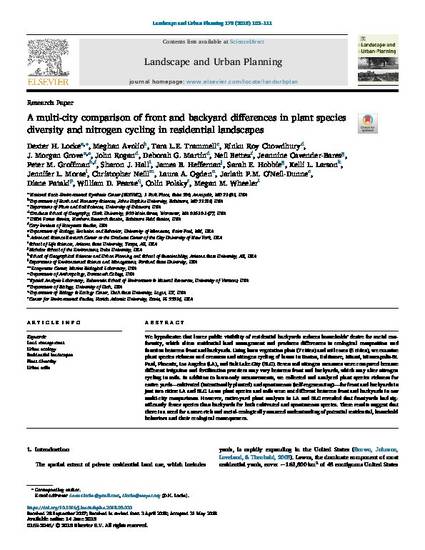
- Lawns,
- Urban land use,
- Urban ecology
We hypothesize that lower public visibility of residential backyards reduces households’ desire for social conformity, which alters residential land management and produces differences in ecological composition and function between front and backyards. Using lawn vegetation plots (7 cities) and soil cores (6 cities), we examine plant species richness and evenness and nitrogen cycling of lawns in Boston, Baltimore, Miami, Minneapolis-St. Paul, Phoenix, Los Angeles (LA), and Salt Lake City (SLC). Seven soil nitrogen measures were compared because different irrigation and fertilization practices may vary between front and backyards, which may alter nitrogen cycling in soils. In addition to lawn-only measurements, we collected and analyzed plant species richness for entire yards—cultivated (intentionally planted) and spontaneous (self-regenerating)—for front and backyards in just two cities: LA and SLC. Lawn plant species and soils were not different between front and backyards in our multi-city comparisons. However, entire-yard plant analyses in LA and SLC revealed that frontyards had significantly fewer species than backyards for both cultivated and spontaneous species. These results suggest that there is a need for a more rich and social-ecologically nuanced understanding of potential residential, household behaviors and their ecological consequences.
© 2018 Elsevier B.V. All rights reserved.
This work was authored as part of the Contributor's official duties as an Employee of the United States Government and is therefore a work of the United States Government. In accordance with 17 U.S.C. 105, no copyright protection is available for such works under U.S. Law.
